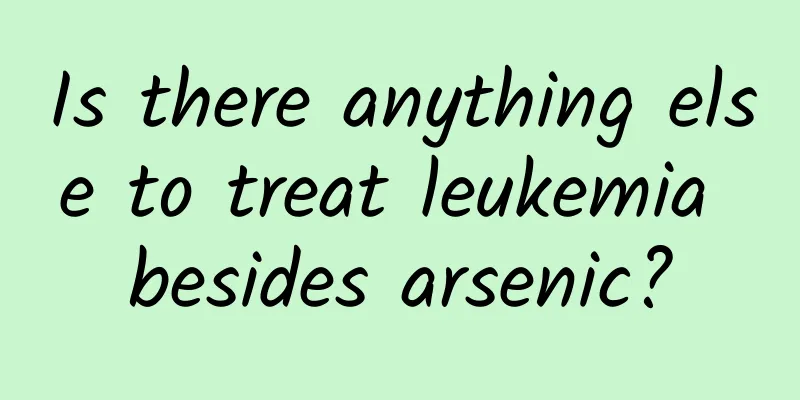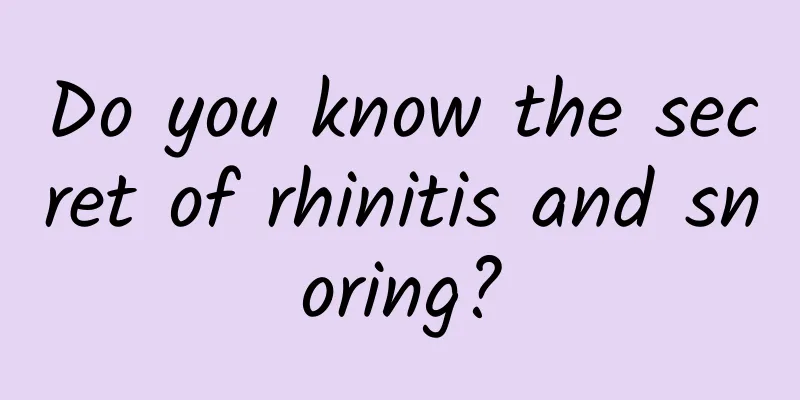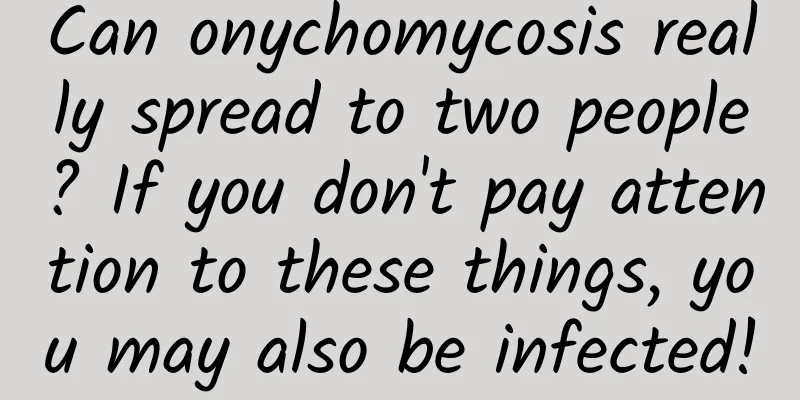Is there anything else to treat leukemia besides arsenic?

|
Editor's note: Why do butterflies fly? Why are flowers so colorful? Why are apples sweet? These interesting phenomena in life are all related to genes. Starting today, Science Popularization China, the Chinese Society of Agronomy and Guangming Online jointly launched a series of interpretations to explore the stories behind the mysteries of genes. In recent years, Chen Zhu, an academician of the Chinese Academy of Sciences, has won many awards in Europe and the United States, all of which are in recognition of their significant contributions to the use of arsenic to treat leukemia. After China's first Nobel Prize in Medicine (Tu Youyou, who discovered artemisinin), Academician Chen is considered one of the Chinese scientists most likely to win the Nobel Prize in Medicine. So, in addition to arsenic, what other methods have been effective in treating leukemia in recent years? What is CAR-T immunotherapy? Before answering this question, let's look at a story: In 2011, 5-year-old Emily Whitehead was diagnosed with acute lymphoblastic leukemia. During the first round of chemotherapy, she became infected and almost lost her legs. Later, her disease relapsed, and she received treatment again and was scheduled for a bone marrow transplant. While waiting, her disease relapsed again. At this time, the doctors were at their wits' end. When her life was in danger, Emily Whitehead became the first child in the world to receive experimental CAR-T immunotherapy. Soon, her cancer completely disappeared. Today, she is 14 years old. Among the 25 children and 5 adults with the same disease as Emily, 27 of them were completely cured and no cancer cells were found. What kind of magical treatment is this? Emily Whitehead in real life (photo from the Internet) The Chinese name of CAR-T immunotherapy is chimeric antigen receptor T cell immunotherapy. T cells are the most ferocious "hunters" in the human immune system. They identify cancer cells through the GPS navigation system (receptors) on the surface of cells and then kill them. But for leukemia patients, their T cell navigation system fails and loses the ability to identify cancer cells in the body. Therefore, doctors and scientists separate T cells from the patient's blood, use gene editing technology to transform the patient's T cell genome, rebuild its GPS navigation system, and restore the ability to identify tumor cells. These "repaired" cells are further expanded and cultured in vitro, and then returned to the patient to achieve the therapeutic effect of identifying and killing cancer cells. CAR-T immunotherapy for leukemia is currently a relatively mature application of gene editing technology in disease treatment. However, this treatment method also has certain limitations. At present, scientists at home and abroad are constantly improving the method. I believe that in the near future, leukemia will be completely defeated. Brief process of CAR-T immunotherapy (picture from the Internet) What is gene editing technology? Since its birth, gene editing technology has been a hot topic of research for the world's top scientists, and any technological breakthrough is enough to attract attention. Before understanding gene editing, you need to first understand what genes are. The so-called gene refers to a substance with hereditary ability in biological cells. It is composed of a substance called deoxyribonucleic acid (also known as DNA) and exists in the form of a double helix in the cell. They can guide cells to synthesize various proteins and issue various "commands" to biological cells to guide biological development and the operation of life functions. For example, what color flowers a plant blooms, how big the fruit is, when it blooms, and when it bears fruit are mostly determined by genes. The double helix structure of DNA (picture from the Internet) Although there are hundreds of millions of organisms on the earth, their genetic information is composed of four types of DNA. These four types of DNA are paired in pairs and arranged in a specific order to form different genes. This arrangement order is called a gene sequence. If their arrangement order is disrupted, the function of the gene will be changed or even "failed". Changes in gene sequences can be divided into two types: natural changes and artificial changes. Natural changes refer to changes in the genes of organisms under the influence of the external environment, which is the driving force of biological evolution. For example, enviable blue eyes. Tens of thousands of years ago, everyone had brown eyes. About 10,000 years ago, the first person with blue eyes appeared in Europe. Scientists have found that a gene mutation called OCA2 causes changes in iris pigment, making the human eyeball no longer brown. Currently, only about 8% of humans in the world have blue eyes. Although this mutation does not improve vision, it greatly improves the aesthetics, making it a natural "beautiful contact lens"! A little girl with blue eyes (picture from the Internet) Another part of the changes in the gene sequence of organisms is artificial. There are many ways, such as genetic breeding, gene editing technology, etc. Among them, gene editing technology is a new technology that has emerged in recent years. Scientists use tools such as molecular scissors (gene editing tool enzymes) to modify the genome of organisms to form gene mutations such as insertion, deletion, and transversion. After completing the above operations on DNA, the characteristics of the gene will be changed, and the corresponding cells, organs, and biological traits will change. Scientists "modify" genes (picture from the Internet) Can gene editing technology be applied to other diseases? Humans are relatively vulnerable to diseases. In addition to leukemia, there are other cancers, AIDS, etc., which can be considered terminal diseases even in the 21st century. There is also a type of disease that is imprinted in the genes of some humans. If the parents are sick, their children will also be sick, such as spinal muscular atrophy, Huntington's disease, Duchenne muscular dystrophy, hemophilia, thalassemia, etc. Although the pathogenesis of each disease is different, gene editing can be used in all of them. If it is found that some genes can resist viruses, the disease-resistant genes can be integrated into the human genome; if some genes cause human diseases or make people more susceptible to diseases, these "bad genes" can be selectively deleted or "corrected" from the human body to cure these diseases. For example, AIDS is a difficult problem that humans have been unable to overcome so far. The immune function of AIDS patients is severely impaired, and a small common cold may take the patient's life. In 2008, an AIDS patient known as the "Berlin patient" was cured, which was the first case in the world. Recently, two more cases of AIDS patients who were successfully cured were reported. It is worth noting that these three patients all underwent bone marrow transplantation, and the bone marrow donors all carried CCR5 mutations. Studies have found that the mutation of CCR5 may be the reason why these people have the ability to resist HIV. Therefore, studying bone marrow transplants carrying CCR5 mutations may find a good way to cure AIDS. Back to CAR-T immunotherapy, we believe that in the near future, gene editing technology will bring hope to more Emily Whiteheads. It may even make gene diagnosis and gene therapy a new "one-stop" service, first by testing the human genome for a physical examination, and after discovering problems, gene editing technology is used for gene therapy and cell therapy, turning incurable diseases into chronic diseases that can be controlled for a long time or completely cured. Produced by: Science Popularization China Author: Mu Wei, Postdoctoral Fellow, Tongji Hospital, Huazhong University of Science and Technology Xu Letian Associate Professor, School of Life Sciences, Hubei University Producer: China Agricultural Society Guangming Online Science Department |
<<: When are strawberries in season? The taste and texture of strawberries
Recommend
What is the reason for miscarriage within one month of pregnancy?
Pregnant women are a special group. For the healt...
Pregnant woman gets stomachache after crying in anger
Although women should maintain a good mood after ...
What does vaginal ultrasound show in ectopic pregnancy?
After a woman is confirmed to be pregnant, she ne...
Is morning urine a good pregnancy test?
A pregnancy test stick is a tool for diagnosing w...
Multiple uterine fibroids are serious
Uterine fibroids refer to uterine fibroids that g...
What is the origin of Songhua eggs? How to eat Songhua eggs
Songhua eggs, also known as preserved eggs or pre...
6,000 worms in one snail! What kind of snail can eat so much?
Audit expert: Li Weiyang Well-known science write...
What is non-invasive pregnancy test?
Minimally invasive testing mainly involves using ...
How long does the NT test take?
Whether the baby is born healthy or not is closel...
Is it good to eat preserved eggs during menstruation?
Duck eggs are the main raw material for processin...
Bleeding after taking Fuyankang tablets
Patients must be extremely cautious when taking m...
How much does painless curettage cost?
Painless uterine curettage is a type of uterine c...
Is it good for women to drink coffee every day?
Coffee has been very popular in recent years. It ...
What causes hypoxia during pregnancy?
In our lives, hypoxia during pregnancy is quite c...









